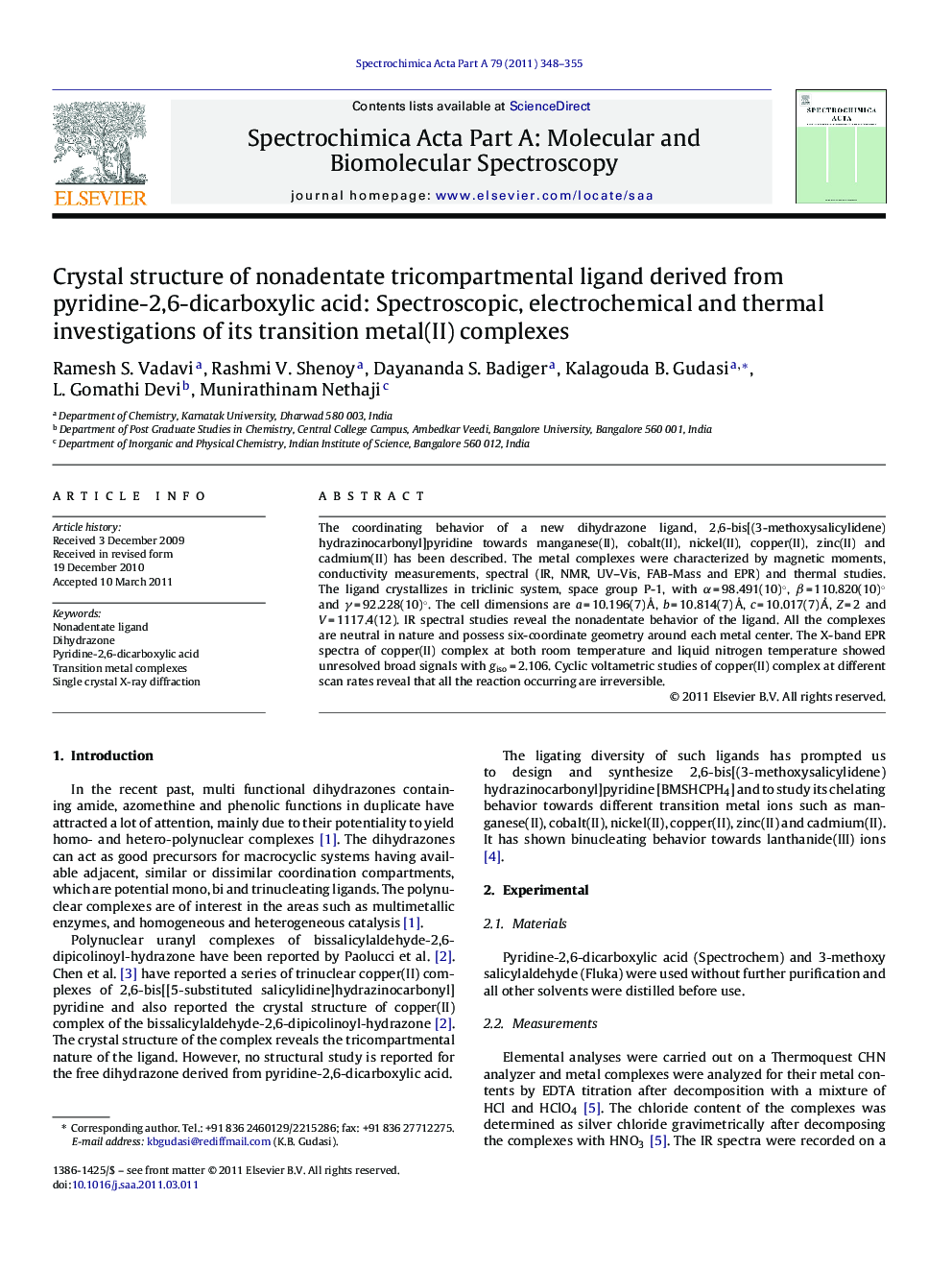| Article ID | Journal | Published Year | Pages | File Type |
|---|---|---|---|---|
| 1235727 | Spectrochimica Acta Part A: Molecular and Biomolecular Spectroscopy | 2011 | 8 Pages |
The coordinating behavior of a new dihydrazone ligand, 2,6-bis[(3-methoxysalicylidene)hydrazinocarbonyl]pyridine towards manganese(II), cobalt(II), nickel(II), copper(II), zinc(II) and cadmium(II) has been described. The metal complexes were characterized by magnetic moments, conductivity measurements, spectral (IR, NMR, UV–Vis, FAB-Mass and EPR) and thermal studies. The ligand crystallizes in triclinic system, space group P-1, with α = 98.491(10)°, β = 110.820(10)° and γ = 92.228(10)°. The cell dimensions are a = 10.196(7) Å, b = 10.814(7) Å, c = 10.017(7) Å, Z = 2 and V = 1117.4(12). IR spectral studies reveal the nonadentate behavior of the ligand. All the complexes are neutral in nature and possess six-coordinate geometry around each metal center. The X-band EPR spectra of copper(II) complex at both room temperature and liquid nitrogen temperature showed unresolved broad signals with giso = 2.106. Cyclic voltametric studies of copper(II) complex at different scan rates reveal that all the reaction occurring are irreversible.
Graphical abstract2,6-Bis[(3-methoxysalicylidene)hydrazinocarbonyl]pyridine acts as a nonadentae tricompartmental ligand towards transition metal ions.Figure optionsDownload full-size imageDownload as PowerPoint slideHighlights► The crystal structure of ligand reveals the presence of ligating sites in the tricompartmental mode. ► IR and NMR spectroscopic studies indicate the nonadentate behavior of the ligand in tricompartmental mode towards Mn(II), Co(II), Ni(II), Cu(II), Zn(II) and Cd(II) ions. ► Electrochemical studies of copper(II) complex at different scan rates reveal that all the reaction occurring are irreversible.
